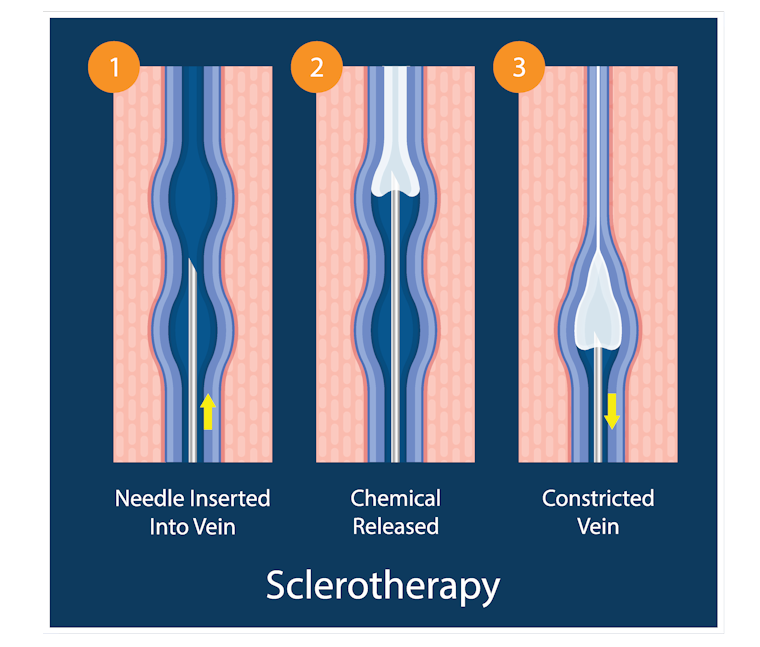Sclerotherapy has been used for over 70 years to treat varicose veins. Along with surgery it has wide range of applications from treating small spider veins to larger veins. The advent of thermal treatments like laser and RFA has meant sclerotherapy is now most used to treat smaller veins only. The long-term data shows that larger veins treated with sclerotherapy alone has a higher chance of reoccurrence (opening again). That has led to most treatments consisting of Laser, RFA, Adhesive glue or surgery. Following this treatment, if there are any residual small veins visible then they are treated with sclerotherapy.
Sclerotherapy involves using very small needles to inject a detergent like drug into the vein. This causes the vein to be damaged. Compression stockings are vital for the success of this treatment as they give time for the vein to stick shut. The procedure is performed in the clinic without any anaesthetic. It is relatively painless and usually takes 20 minutes. It is common for patient for to require more than one treatment.


Benefits of sclerotherapy:
- Quick and relatively painless
- Can treat very small and wriggly veins
Sclerotherapy does have some disadvantages regarding higher rate of veins reopening. Some patients can react to the drug. It is not as effective in treating very large veins and cause skin irritation.